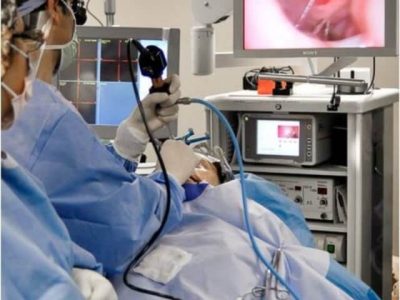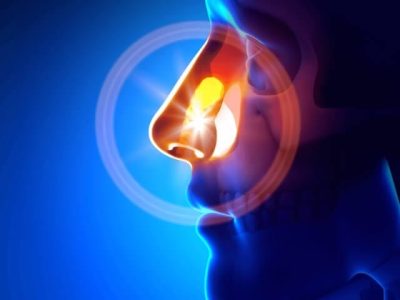Middle Ear infections and Ventilation Tube Replacement
Middle ear infections (otitis media) are significantly more common in children than in adults, especially between the ages of 2 and 6. While most acute ear infections resolve with appropriate treatment, some cases result in persistent fluid accumulation in the middle ear, even after symptoms have subsided. This condition, known as Chronic Serous Otitis Media (CSOM), can affect a child’s hearing and development if left untreated.
What Is Otitis Media?
Otitis media is the inflammation or infection of the middle ear. It often follows a cold or upper respiratory infection and is especially common in school-age children.
There are two main forms:
- Acute Otitis Media (AOM):
Presents with pain, fever, and often a temporary reduction in hearing. With appropriate treatment, it typically resolves without lasting effects in 4–6 weeks. - Otitis Media with Effusion (OME):
Refers to fluid in the middle ear without signs of infection. When this fluid remains for more than three months, it may become chronic, leading to Chronic Serous Otitis Media.


Signs That May Indicate Chronic Fluid in the Ear
Parents often notice:
- “My child doesn’t seem to hear me.”
- “They give vague or unrelated answers to questions.”
- “They’ve started sitting closer to the TV.”
- “They’re on antibiotics almost every month for an ear infection.”
These may all point to undiagnosed or persistent fluid behind the eardrum, affecting hearing and potentially speech development.
Risk Factors for Chronic Middle Ear Fluid
- Age between 2–6 years
- Premature birth
- Craniofacial anomalies (e.g., cleft palate, Down syndrome)
- Incomplete or inadequate treatment of previous ear infections
- Allergies or chronic nasal inflammation
- Enlarged adenoids (adenoid hypertrophy) blocking the Eustachian tube
- Attending daycare or crowded environments
- Exposure to secondhand smoke
- Weak immune system
- Environmental or seasonal factors (cold climates)
Ear Tube Insertion (Tympanostomy): A Solution for Persistent Ear Fluid
What Is an Ear Tube?
An ear tube, or ventilation tube, is a tiny cylinder inserted into the eardrum to allow air to enter the middle ear and fluid to drain out. It helps prevent future infections and restores hearing in children with persistent middle ear effusion.
When Are Ear Tubes Recommended?
Ear tube placement is considered when:
- Fluid in the middle ear persists for more than 3 months (Chronic Serous Otitis Media)
- The child experiences recurrent infections (e.g., 3 in 6 months or 4 in a year)
- There is noticeable hearing loss
- Speech or learning delays are observed
- There are structural issues such as enlarged adenoids contributing to the problem


The Procedure
- Performed under general anesthesia
- A small incision is made in the eardrum under a microscope
- Any fluid is suctioned out of the middle ear
- A millimeter-sized ventilation tube is placed into the eardrum
- The entire procedure takes approximately 15 minutes per ear
- The child is usually discharged the same day
- Hearing improvement is typically immediate
Recovery and Aftercare
- Children can return to normal physical activity the day after surgery
- Tubes usually remain in place for 3–6 months
- During this time, the tubes ventilate the middle ear and allow it to heal
- Most tubes fall out naturally into the ear canal and are removed easily during a routine checkup
Precautions:
- During baths or swimming, the ears should be protected with vaseline-coated cotton or earplugs
- Diving is not recommended
- Other than water protection, no activity restrictions are necessary
Additional Considerations
If the child also has issues related to enlarged adenoids or tonsils, these may be addressed during the same procedure. Although rare, in some children the problem may return as they grow, and further treatment might be necessary.
Because of this, annual ENT evaluations are recommended until adolescence, particularly for children with risk factors.
Middle ear infections are very common in children and are often successfully treated with medication. However, if fluid persists or infections are frequent, this can affect hearing, speech, and development. Ear tube placement is a safe and effective procedure that improves hearing, reduces infections, and enhances quality of life.

Frequently Asked Questions (FAQ)
WHAT CAUSES MIDDLE EAR INFECTIONS?
A middle ear infection, also known as otitis media, is an infection or inflammation of the space behind the eardrum. Middle ear infections are often caused by bacteria or viruses, usually following a cold, sinus infection, or upper respiratory illness. Swelling can block the Eustachian tube, trapping fluid in the middle ear and creating an environment for infection.
WHAT IS THE DIFFERENCE BETWEEN ACUTE OTITIS MEDIA AND SEROUS OTITIS MEDIA?
Acute Otitis Media (AOM) and Serous Otitis Media (SOM), also known as Otitis Media with Effusion, are both conditions that affect the middle ear, but they differ significantly in cause, symptoms, and treatment.
Acute Otitis Media (AOM) is an active infection of the middle ear, most commonly caused by bacteria or viruses. It often develops suddenly and presents with noticeable symptoms such as ear pain, fever, irritability, and sometimes fluid drainage from the ear. AOM involves infection and inflammation and it usually requires treatment with antibiotics, along with pain relievers to manage discomfort. If left untreated, AOM can lead to complications like eardrum rupture or spread of infection.
In contrast, Serous Otitis Media (SOM) is not an directly an infection. It occurs when fluid accumulates behind the eardrum due to Eustachian tube dysfunction, which often follows a cold, upper respiratory infection, or allergic reaction. The fluid in SOM is clear or usually non infected, and the condition usually does not cause fever or acute ear pain. Instead, patients may notice a sensation of fullness in the ear, muffled hearing, or sometimes balance issues.
Treatment for SOM is usually conservative at first. In many cases, the fluid resolves on its own over a few weeks. However, if the condition persists for longer than 3 months, or if it causes significant hearing loss particularly in children during speech development years your ENT specialist may recommend the placement of ventilation tubes to drain the fluid and restore normal hearing.
WHAT ARE THE VENTILATION TUBES?
Ventilation tubes also known as tympanostomy tubes, ear tubes, or grommets are tiny cylindrical devices inserted into the eardrum (tympanic membrane) to help drain fluid from the middle ear and equalize pressure. They are commonly used to treat chronic otitis media with effusion or recurrent ear infections, especially in children.
WHY ARE VENTILATION TUBES USED?
These tubes allow air to enter the middle ear and prevent the accumulation of fluid behind the eardrum. They help:
- Improve hearing
- Reduce the frequency of ear infections
- Prevent complications such as speech delays in children
Relieve symptoms like ear fullness or pressure
TYPES AND DURATRION IN THE EARDRUM OF VENTILATION TUBES
There are two main types of ventilation tubes, each designed for different durations:
- Short-Term Tubes
- Also known as standard or grommet tubes
- Made of soft plastic or silicone
- Typically remain in the eardrum for 6 to 12 months
- Most often fall out on their own as the eardrum heals and pushes the tube out naturally
- Used in most routine cases, especially in children
- Long-Term Tubes
- Also called T-tubes or durable tubes
- Larger and more stable in shape (often T-shaped)
- Made from materials like fluoroplastic or titanium
- Designed to stay in the eardrum for 12 to 24 months or longer
- May need to be manually removed by an ENT specialist if they do not fall out on their own
- Used in cases of more severe or chronic middle ear disease, or after multiple previous tube placements






